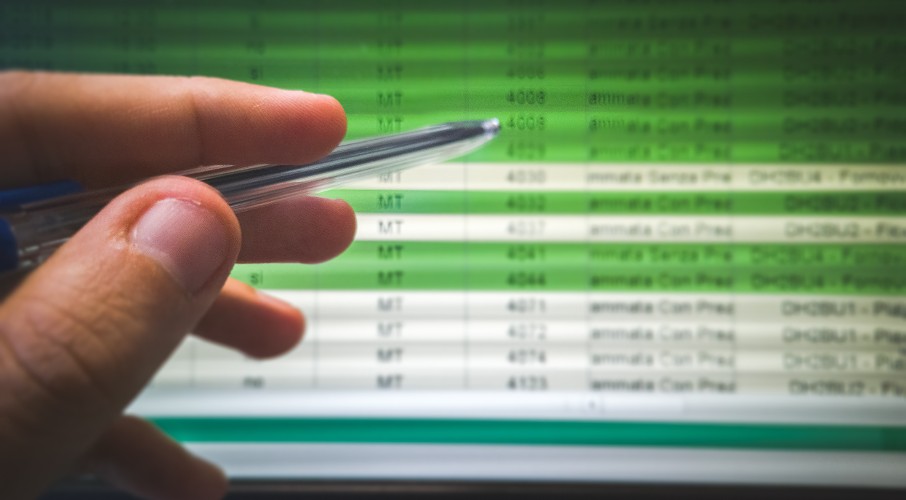In this article, you will learn:

What is accounts payable: definition and example
- What Is Accounts Payable?
- What Is the Role of Accounts Payable?
- What Is the Accounts Payable Process?
- What Is Included in Accounts Payable?
- What is Accounts Payable Turnover?
- How to Record Accounts Payable?
- How to Record Accounts Receivables?
- How to Calculate Accounts Payable?
- Reducing Accounts Payables
- Discounts on Accounts Payable vs Accounts Receivable
- Example of Accounts Payable
- General Ledger Account: Accounts Payable
What is accounts payable?
Accounts payable refer to the money your business owes to its suppliers for providing goods or services to you on credit. Typically, these are the short-term debt that you owe to your suppliers. In other words, the total amount outstanding that you owe to your suppliers comes under accounts payable. Furthermore, they are represented under current liabilities on your firm’s balance sheet. This is because accounts payable become due for payment within a year.
In addition to this, your cash flow statement represents an increase or decrease in accounts payable in the prior periods. Say your firm’s accounts payable increase as compared to the previous period. This means that your business is purchasing more goods on credit than for cash. However, say your accounts payable decrease relative to the previous period. This implies that you are meeting your short-term obligations at a faster rate.
Accordingly, accounts payable management is critical for your business to manage its cash flows effectively.
What is the role of accounts payable?
Accounts payable management is essential for you as a small business. This is because it ensures that your accounts payable contribute positively towards your business’s cash flow. That is, it helps you to minimise late payment costs like interest charges, penalties, etc.
Furthermore, it helps to reinvest the funds into your business that you would have otherwise paid to your suppliers. That means that accounts payable act as an interest-free source of finance for your business, provided they are managed effectively.
In addition to this, effective accounts payable management practices build trust with your suppliers because you are honouring the agreed payment terms and paying your suppliers on time. Building trustworthy and strong relationships with suppliers is essential. This is because it helps you to receive goods on better credit terms from your suppliers.
Effective accounts payable management also ensures that proper controls are in place. That is, it helps you avoid errors like duplicate payment, inaccurate invoices, fraud by suppliers, inefficient processes or late payment.
If managed effectively, your accounts payable indicate the operational effectiveness of your business. Excessively high accounts payable indicates that your business will face challenges in settling your supplier invoices. However, too-low accounts payable indicates your business is missing out on the benefits of trade credit.
Proper accounts payable management helps in organising and maintaining supplier information and payment terms. This means it ensures that all the supplier invoices, purchase orders and other expenditures are tracked and paid on time. Furthermore, it will also help to prevent missing payments.
What is the accounts payable process?
Streamlining the accounts payable process is an essential aspect of your business growth and development. However, it is often overlooked, as managing accounts payable is a backend task. Therefore, you need to make your accounts payable process efficient so that it provides a competitive advantage to your business.
So, the main aim of implementing the accounts payable process is to pay your bills and invoices that are error-free and legitimate.
The accounts payable department of each business may have its own set of procedures in place before making payments to suppliers. However, before streamlining your accounts payable process, it is essential to understand the accounts payable cycle.
The accounts payable cycle is a part of your purchasing cycle. It includes activities essential to completing a purchase with your supplier. So, considering a complete accounts payable cycle, your accounts payable process must include the following steps.
Capturing data through chart of accounts
An ideal accounts payable process begins with a proper chart of accounts. A chart of accounts is a list of all your accounts, including accounts payable. Quickbooks accounting software categorises your transactions and breaks them down into various categories. These include assets, liabilities, income and expenses.
Generally, Quickbooks provides a list of standard accounts like accounts payable, accounts receivable, purchase orders, payroll expenses, etc. However, if you do not see an account that you need, you can add your own accounts manually in your chart of accounts.
Therefore, the chart of accounts helps you to track your accounts payable expenses in a proper manner. You can also generate your chart of accounts in Microsoft Excel or Google Sheets.
Adding supplier details
If you are starting your business, you need to add details for all your suppliers into your accounting software or Microsoft Excel Sheet.
If you are using an online accounting software like Quickbooks, you can add suppliers and details relating to each supplier into the software itself. These details include the supplier’s address, email ID, contact number, website, Australian Business Number, etc.
You can also include payment terms agreed upon with the supplier. These payment terms specify the time period you will take to make payment to your supplier. The standard payment terms include net 10, net 20 or net 30.
Say your supplier sends an invoice with payment terms of net 30, and the invoice date is 10 October. Accordingly, you are required to pay your supplier at the latest by 9 November. Otherwise, your payment will be considered late.
Besides the above-mentioned payment terms, another standard payment term is 2/10 net 30. Let’s consider the same example as above.
The 2/10 net 30 payment term means you can take a 2% discount on the total amount due if you pay your invoice within 10 days. Otherwise, you will have to pay the full outstanding amount of the invoice due by 9 November.
Checking and filling in invoice details
You need to check the invoices you receive from your suppliers thoroughly. Examining invoices is essential to ensure the accuracy of data.
Also, you need to cross-check the goods received from your suppliers with those mentioned in the invoice. Likewise, you need to check whether you have received all the services that were mentioned in the supplier invoice.
Once you review all the received invoices, you can start filling in the invoice details. If your suppliers create and send invoices using invoicing software, then the invoice details get uploaded to your accounting software automatically.
However, if your suppliers create and send invoices manually, then you need to start filling in the details either in your accounting software or your books of accounts.
Processing payment
You need to keep track of your accounts payable to know when the payments are due. This will help you to make payments to your suppliers on time.
Quickbooks online accounting software allows you to keep track of your accounts payable that are due for payment.
This can be done by generating reports like the accounts payable ageing summary report and the accounts payable ageing detail report.
For instance, the accounts payable ageing summary report not only tells you about the suppliers to whom you owe money, it also reflects the invoices against which your payments are overdue.
If you are using manual accounting software, then you will have to review the due date of each of the invoices.
This is to know the invoices that are due for payment. Once you review all the invoices, the next step is to process payments for those invoices. There are various ways in which you can make payments against the invoices.
- Write a cheque
- Pay electronically
- Process cheques via accounting software
- Pay with a company credit card
Repeat the process
You can follow the above procedure either weekly or fortnightly. This to reduce your workload at the end of the month. Following a weekly or a fortnightly accounts payable cycle can help you avoid late payments. You must process your invoices on a regular basis even if you have only a few suppliers.
What is included in accounts payable?
Accounts payable refer to the supplier invoices against which you receive goods or services before you make payments on them. That is, you purchase goods on credit from your suppliers. Thus, your suppliers that supply goods on credit are also referred to as trade creditors.
Since you purchase goods on credit, the accounts payable are recorded as current liabilities on your company’s balance sheet. It is important to note that the accounts payable category represents the short-term obligations of your business.
That is, it represents the aggregate amount of short-term obligations that you have towards the suppliers of goods or services. Thus, the accounts payable also include the trade payables of your business.
This is because trade payables refer to the amount of money that you owe to your suppliers for products related to inventory.
Inventory includes the raw materials needed to produce goods for sale or finished goods. That is, trades payable is the amount for which you bill your suppliers for those goods or services that you use for the ordinary course of business.
Therefore, if your business has only a few accounts payable, you may record them directly in your general ledger. However, if you have a large number of accounts payable, you may first record the individual accounts payable in a sub-ledger.
A sub-ledger consists of details of all the individual transactions of a specific account like accounts payable, accounts receivable or fixed assets.
The total of all these individual transactions can then be recorded in the general ledger.
What is accounts payable turnover?
Accounts payable turnover refers to a ratio that measures the speed with which your business makes payments to its creditors and suppliers. Thus, the accounts payable turnover ratio indicates the short-term liquidity of your business. It reflects the number of times your business makes payments to its suppliers in a specific period of time. In other words, the accounts payable turnover ratio signifies the efficiency of your firm in meeting its short-term obligations and making payments to suppliers.
Accounts payable turnover ratio formula
You need to first calculate the total purchases that you have made from your suppliers. These purchases are made during the period for which you need to measure the accounts payable turnover ratio.
Then, you need to calculate the average amount of accounts payable during this period. Finally, you can calculate the accounts payable turnover ratio using the following formula:
Accounts payable turnover ratio formula = total purchases from suppliers/((opening accounts payable + closing accounts payable)/2).
Or: accounts payable turnover ratio = total purchases from suppliers/average accounts payable.
Remember, you need to deduct all the cash payments made to the suppliers from the total purchases from suppliers in the above formula. This is because the total supplier purchases should include only the credit purchases made from the suppliers.
Analysis of accounts payable turnover ratio formula
Your company is paying slowly to its suppliers if its accounts payable turnover ratio falls relative to the previous period. A falling trend in the accounts payable turnover ratio may indicate that your company is not able to pay its short-term debt. In other words, it is facing a financial crunch.
On the other hand, your business is considered to be taking advantage of discounts on early payments if it is paying its suppliers very quickly.
Example of accounts payable turnover ratio
Robert Johnson Pty Ltd needs to determine its accounts payable turnover ratio for 2019. It had an opening accounts payable balance of $500,000 and a closing accounts payable balance of $650,000.
In addition to this, Robert Johnson Pyt Ltd made purchases worth $6,000,000 during the year. Therefore, the accounts payable turnover ratio of Robert Johnson Pty Ltd for 2019 is as follows:
Accounts payable turnover ratio = $6,000,000/(($500,000 + $650,000)/2)
= $6,000,000/$575,000
= 10.43 times.
This means that Robert Johnson Pty Ltd paid its suppliers 10.43 times during the year. Furthermore, you can also calculate the accounts payable turnover ratio in days. This ratio shows the average number of days it takes you to make payments to your suppliers.
Thus, the formula for accounts payable turnover ratio in days is as follows.
Accounts payable turnover ratio in days = 365/accounts payable turnover
= 365/10.43
= 34.98 days.
This means that Robert Johnson Pty Ltd makes payments to its suppliers after approximately 35 days.
How to record accounts payable
As mentioned earlier, accounts payable refer to the total short-term obligations of your business towards its creditors or suppliers. That is, these obligations need to be met in less than a year. Therefore, accounts payable appear on the liability side of your balance sheet, under current liabilities.
So, whenever your supplier provides goods or services on credit to your business, there are accounts payable outstanding on your balance sheet. This means the accounts payable account gets credited, as there is an increase in the current liability of your business.
Since we typically follow a double-entry bookkeeping system, there has to be an offsetting debit entry to be made in your company’s general ledger. Thus, either an expense or an asset forms part of the debit offset entry for accounts payable.
Example of accounts payable
Say Robert Johnson Pty Ltd purchased goods worth $200,000 on credit from its supplier. It would record the following journal entry on receipt of the goods on credit from its supplier.
| Particulars | Debit | Credit |
| Purchases account (dr.) | $200,000 | |
| To Accounts Payable (cr.) | $200,000 |
When Robert Johnson Pty Ltd makes payment to its supplier, the accounts payable account gets debited. This is because Robert Johnson’s current liability reduces by $200,000. The offsetting credit entry for such a transaction is made to the cash account. This is because cash worth $200,000 gets reduced.
So, the following is the journal entry for cash paid to the supplier.
| Particulars | Debit | Credit |
| Accounts Payable account (dr.) | $200,000 | |
| To Cash (cr.) | $200,000 |
How to record accounts receivable
Let’s consider the above example again to understand how to record accounts receivable.
When goods are sold on credit
As per the above example, Robert Johnson Pty Ltd sold $300,000 worth of paper to James & Co. on a 45-day credit period. The journal entry at the time the invoice is raised would be as follows:
| Particulars | Debit | Credit |
| Accounts receivable A/C (dr.) | $300,000 | |
| To sales (cr.) | $300,000 |
Thus, debiting accounts receivable with $300,000 means an increase in accounts receivable by the same amount. Likewise, crediting the sales account by $300,000 means an increase in sales by the same amount.
When cash is received for goods sold on credit
In the above example, James & Co. paid $300,000 in cash to Robert Johnson Pty Ltd within 45 days. The journal entry at the time cash is received for goods sold on credit would be as follows:
| Particulars | Debit | Credit |
| Cash A/C (dr.) | $300,000 | |
| To accounts receivable (cr.) | $300,000 |
As per the above journal entry, debiting the cash account by $300,000 means an increase in the cash account by the same amount. Likewise, crediting accounts receivable by $300,000 means a decrease in the accounts receivable by the same amount.
How to calculate accounts payable
You can calculate the accounts payable by generating an accounts payable ageing summary report (if you are using Quickbooks Online accounting software). This report gives a summary of all the accounts payable balances. It also lets you know about the balances that are overdue for payment.
If you do not have accounting software, you can calculate your accounts payable by adding the amounts of all the bills that you have maintained physically.
Below is the balance sheet of Walmart Inc. as of 31 January, 2020. It shows that the accounts payable of Walmart Inc. were $46,973 million in 2020 and $47,060 million in 2019. Thus, an investor or an outsider can calculate days payable outstanding in order to know the number of days Walmart Inc. takes to clear its accounts payable.
Furthermore, based on Walmart’s payment schedule, its suppliers can determine the credibility of the company. For instance, the suppliers would consider Walmart Inc. to be a credible customer if it pays its suppliers within a decent credit period.
Walmart Inc.’s days payable outstanding also help the company ensure that it is neither paying its suppliers too early nor too late.
Delaying the payments for a few days would help Walmart Inc, to hold more cash before eventually paying its suppliers.
However, delaying payments for a long period would critically impact Walmart’s relationship with its suppliers.
Reducing accounts payable
Your business must focus on optimising its accounts payable and thus free up working capital to enhance business growth. Ineffective accounts payable management can lead to invoices not being processed on time, or to losing out on the opportunity to take advantage of discounts.
Following are some of the strategies that you can adopt to optimise your business’s accounts payable.
Choose preferred suppliers
You need to set up a list of favoured suppliers. This is to promote moderate and favourable buying from your suppliers. Such a list can be developed considering certain factors. These include the supplier’s performance, their financial soundness, their brand identity and their capacity to negotiate.
Review supplier contracts regularly
It is essential for you to review your supplier contracts on a regular basis. This is to help you to prevent fraudulent billing practices, e.g. overpayment or duplicate payment.
Therefore, to carry out such a practice, you need to ensure that you have a proper accounts payable team. The team reviews supplier data for its completeness, accuracy and compliance with standard terms.
Besides this, you also need to include certain clauses in your supplier contracts to penalise suppliers in case of non-performance or underperformance.
Pay accounts payable early
Paying accounts payable on time strengthens your company’s relationship with your suppliers. In return, the suppliers may offer attractive discounts so that you can save more and stay connected with the supplier.
Use accounts payable software
You need to ensure that you have a centralised invoice processing system in place. Online invoicing software like Quickbooks helps you to automate your accounts payable process by going paperless. That is, all your company’s bills can be created and sent via the invoicing software.
Hence, there is no need for you to manually enter or upload all your invoices. Besides this, your purchase and payment process is also automated.
Discounts on accounts payable vs accounts receivable
If you are a credible customer for your supplier, you can receive early payment discounts on your accounts payable. Likewise, you can also offer discounts to your customers so that they can make early payments against the accounts receivable.
Thus, you can receive a discount on your accounts payable and you can give a discount on your accounts receivable. Both accounts payable and accounts receivable form an important part of trade credit.
It is important for your business to receive trade credit from its suppliers in the form of accounts payable. This is to finance your production process. However, it is also important to extend trade credit in the form of accounts receivable to sell goods to your customers.
Methods to pay early discounts
There are two methods to pay and record discounts:
Net method
Under the net method, if you pay your supplier within the agreed-upon time period, you get a discount of a certain percentage. This is before the payment becomes due.
For instance, 2/10 net 30 is a trade credit that your suppliers offer for the sale of goods or services. This means that you will receive a discount of 2% if you pay the amount due within 10 days. Otherwise, the full amount is due within 30 days.
Considering the above example, say Robert Johnson Pty Ltd makes a purchase of $10,000 from its supplier James and Co. This is done on a credit term of 2/10 net 30. The journal entry in James and Co.’s books is as follows:
| Particulars | Debit | Credit |
| Accounts payable account (dr.) | $9,800 | |
| To sales (cr.) | $9,800 |
Say Robert Johnson Pty Ltd pays cash within 10 days to take advantage of a 2% discount. In that case, the journal entry in the books of James and Co would be as follows.
| Particulars | Debit | Credit |
| Accounts payable account (dr.) | $9,800 | |
| To sales (cr.) | $9,800 |
Now, the journal entries in the books of Robert Johnson Pty Ltd would be as follows.
| Particulars | Debit | Credit |
| Purchases (dr.) | $9,800 | |
| To accounts payable (cr.) | $9,800 |
| Particulars | Debit | Credit |
| Purchases (dr.) | $9,800 | |
| To accounts payable (cr.) | $9,800 |
Gross method
The gross method records the total value of receivables in case you take advantage of a discount from your supplier. Accordingly, James and Co. will reduce its revenue in the income statement. The journal entries in James and Co.’s books are as follows:
| Particulars | Debit | Credit |
| Accounts receivable account (dr.) | $10,000 | |
| To sales (cr.) | $10,000 |
Say Robert Johnson pays James and Co. within 10 days. In this case, the journal entry in the books of James and Co. would be as follows.
| Particulars | Debit | Credit |
| Cash A/C (dr.) | $9,800 | |
| Cash discount A/C (dr.) | $200 | |
| To accounts receivable (cr.) | $10,000 |
Likewise, the following entries would be shown in Robert Johnson’s books of accounts.
| Particulars | Debit | Credit |
| Accounts payable account (dr.) | $10,000 | |
| To cash discount (cr.) | $200 | |
| To cash (cr.) | $9,800 |
General ledger account: Accounts payable
Accounts payable is a general ledger account that shows the amount of money that you owe to your creditors/suppliers. Say you receive an invoice with the payment terms from your supplier. Whenever you receive such an invoice, it gets recorded in your accounts payable ledger.
As a result, your total liabilities also increase by the same amount. Now, the accounts payable represent the short-term debt obligations of your business. Hence, they form a part of the current liabilities on your company’s balance sheet.
Accordingly, accounts payable have a credit balance since they are current liabilities. This means the accounts payable balance would increase if there is a credit entry. However, the accounts payable balance would decrease if there is a debit entry.
Say, for instance, you receive invoices from your suppliers. These supplier invoices would be recorded as credits to your accounts payable account.
As a result, such a transaction would increase the credit balance of your accounts payable. When you eventually pay your suppliers in cash, your accounts payable balance gets reduced. This happens with the debit of the accounts payable account.
Frequently asked questions
Related Articles
Looking for something else?

TAKE A NO-COMMITMENT TEST DRIVE
Your free 30-day trial awaits
Our customers save an average of 9 hours per week with QuickBooks invoicing*
By entering your email, you are agree to our Terms and acknowledge our Privacy Statement.














